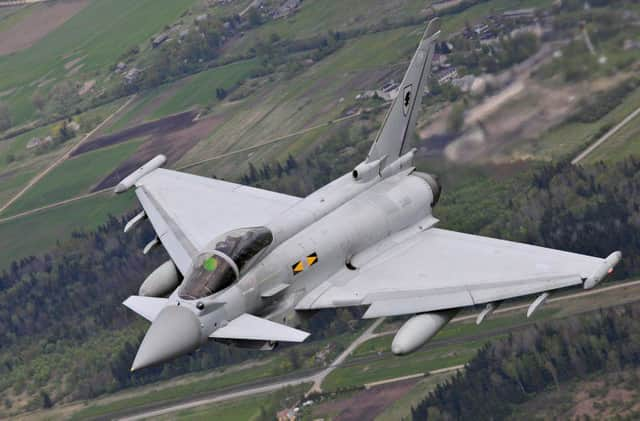Near miss for RAF fighter jets near Lossiemouth


The air incident, involving a Tornado and a Typhoon, happened near Lossiemouth in Moray on the morning of August 17 last year.
Advertisement
Hide AdAdvertisement
Hide AdIt was the subject of a safety investigation and the findings of a report by the UK Airprox Board have now been published.
Officials concluded that “safety margins had been much reduced below the norm” during the incident.
The Tornado pilot, the last in a formation of four, had just become airborne at around 9.50am when he became aware of a flash on his left hand side.
He turned his head to see a Typhoon “obviously reversing its turn away from him”, the report states.
The Typhoon pilot became aware of the Tornado “climbing out and in close proximity on the inside of his turn”.
Both pilots assessed the collision risk as being “medium”.
The two jets came within 286ft of each other during the incident, the report notes.
It concluded that the mid-air event happened because the Typhoon pilot “did not integrate effectively with the departing Tornado”.
Further contributory factors - including the extended break of the Typhoon around the village and the fact the airborne jets were not told about the departing Tornados - were noted.
Advertisement
Hide AdAdvertisement
Hide AdExperts also found that the Tornado’s traffic collision avoidance system (TCAS) had not alerted the pilot to the nearby aircraft and was therefore “ineffective” during the incident.
The board found that safety investigators’ conclusion that the TCAS had “simply not warmed up in time” was probably correct.
There was little the Tornado pilot could or should have done differently in the circumstances, the report found.
It assessed the degree of risk at level B, meaning the safety of the aircraft was not assured.
A number of recommendations have already been made and enacted following the event, the report states.